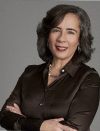When I think of the torture and murder of George Floyd at the knee of a White police officer, I feel morally wounded.
We’ve been here before, with countless Black men and women whose lives were taken by those who wielded unearned power over them. But to me, as a woman of color leading the country’s largest public health agency, Mr. Floyd’s death feels different because it represents a cumulative injury on top of the sustained acuity of health inequities playing out in horrifying details through the COVID-19 pandemic. This accumulation pays cruel dividends to communities of color. Our data predict these outcomes but cannot undo them. It’s like watching a preventable collision in slow motion that we’re powerless to stop. The wreckage haunts us.
So how to stop it, when signaling the need for systemic change seemingly never leads to sustainable action? Outrage at those in authority who are failing us is understandable when data documenting generations of disinvestment and inequitable health outcomes are so clear. We should feel morally injured by actions committed in the name of maintaining false power structures, and by those who choose to linger in descriptions of the wreckage rather than take actions to prevent it.
Think of a collective moral injury as lasting emotional and spiritual impacts on a community when authorities commit actions that violate core moral values and expectations of righteous behavior. It is “a deep soul wound that pierces a person’s identity, their sense of morality, and their relationship to society,” as Diane Silver put it (https://bit.ly/2YGfbTt).
Moral injury is not a burden we should carry alone, but one we must share with others, so that we are all made stronger in the struggle to advance racial equity. By bringing our full selves to this work every day, and by sharing our anger, hope, and pain, we create authentic spaces of healing, and push ourselves and one another to show up and be accountable. In a time of physical distancing, we must work harder to remain emotionally connected and rooted in our righteousness. We must not revert to our silos, or concede—in any way, shape, or form—defeat.
Anticipating the post–COVID-19 rebuilding reminds me of when I visited South Africa shortly after the fall of apartheid, and of what one of the young doctors at a newly formed school of public health told me. “We are excited to heal our country,” she said. Despite crushing inequities, there was still hope. There was still fight.
I think of that young doctor often whenever I ask myself, “Have I done enough?” And although the last weeks and months have been the most challenging of my life, I continue to push myself as a leader to create opportunities for my staff and our community partners to have hard conversations about how public health has contributed to reifying racist frameworks and to find ways to start undoing the harm.
For example, it has long been taken as public health gospel that data should not be made public until fully complete. But the stark inequities in how COVID-19 was playing out in New York City emerged so quickly and clearly in our analyses that we decided to break protocol and release incomplete data. As a result, agency partners, health care providers, community leaders, and government officials immediately joined us in centering the most affected New Yorkers in their responses to the virus. Prioritizing action above convention, in this case, almost certainly saved lives. This was a powerful lesson in how eliminating racism in systems designed to ignore or perpetuate it requires a willingness to strategically break seemingly ironclad rules.
Confronting public health inequities, therefore, demands that we confront public health’s systemic rigidities and biases, and our own. Our challenge is to fight systemic racism with boldness, love, and a living commitment to the struggles for justice that the past months have made impossible for even the most institutionally dogmatic to ignore. There will be missteps, and times when things we do may seem insignificant. But if we stand shoulder to shoulder with our communities and pursue justice and equity to the fullest every day, we can reshape moral leadership in our country and heal our collective moral injury.
42 Years Ago
Rural Health Challenges
Occupational injuries and accidents are more prevalent in rural America. Rural areas have an overall rate of disability and death from accidents 30 or 40 per cent higher than urban areas. Farming has one of the highest rates of fatal accidents of all occupations. . . . Based on a 1969 federal government poverty index, 17.0 per cent of the rural population, compared to 10.2 per cent of the urban population, have incomes below the poverty level. From the positive relationship between poverty and illness . . . the infant mortality rate . . . is one-third higher in rural America. . . . A severe shortage of physicians exists: the number of active doctors in metropolitan U.S. counties is approximately 156 per 100,000 population, compared to only 64/100,000 in rural U.S. counties …
From AJPH, October 1978, p. 981.
84 Years Ago
Deficits in Rural Health Services
In spite of the fact that during the past quarter of a century there has been definite progress in rural health work, at the present time less than one-quarter of the rural population is served by full-time local health units. Also on the discouraging side of the picture is the fact that many of these full-time units are not adequately staffed and financed to carry on even a reasonably comprehensive public health program. . . . It likewise seems certain that in many rural areas most of the people have no understanding of the need or value of more adequate health services.
From AJPH, November 1936, p. 1125.
Biography



